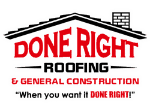When considering roof designs, people usually have the shape and style of the roof in mind as prime factors on which to base their selection. They want to make sure if it fits in with the general structure of their home and neighborhood. Although shape and style are important, there are a number of other factors that are of equal or greater importance and deserve due consideration in selecting a roof design.
Complex roof designs do add to the aesthetic appeal of a house but at the same time have high initial construction costs and are difficult to maintain incurring high maintenance costs over the roof's life.
Simple roofing designs that have few intersecting surfaces are much easier to install and fit in perfectly with simple house designs. Inexpensive to build, they require the minimum maintenance and related costs. In simple roof designs it is also easy to install and maintain gutters; there are fewer clog points, valleys and other places requiring frequent cleaning etc that can result in a leaking roof. Roofs incorporating simple designs are practical and functional. If a house has attractive landscaping and is kept neat and tidy, a simple roof design can provide a strong street appeal.
However, while going for a simply designed roof the selection should not extend to a flat roof. There are a number of reasons why this can prove to be an unwise selection. Even if they involve low costs for construction, flat roofs may prove to be more costly in the long run. While water runs off slanted roofs, flat roofs afford a place where water can collect creating greater susceptibility to roof damage. The roof is also more likely to sag when even more water can collect, greatly lessening the strength and life of the roof. All this can increase the maintenance bill quite a bit.
Security is another concern. Steeply inclined roofs offer very little incentive to thieves and burglars to get into the upper portions of the house. A flat roof on the other hand makes breaking into the house much easier. Flat roofs also do not shear the air as angled roofs do and therefore are prone to wind damage. They are often torn and easily blown away.
While selecting a roof design the relevant building codes and any neighborhood covenants also need to be kept in mind along with other factors like climate, costs etc. including your own preference. Since the roof is an integral part of your home's design it needs to complement the overall appearance of the house also and cannot be treated simply as a weather covering on the top of the house.
The more common shapes for consideration in roof designs can be pyramid, cross gabled, front/side gabled, gambrel, bonnet, mansard, flat, salt box etc. Each shape can comprise a number of variations in features while maintaining overall shape. For example it can have a steep pitch or one that is quite shallow. There may be special features to be considered like a cupola, a turret or the like depending on the architecture of your home that may demand variation(s) in the design selected.
The material to be used in the construction of the roof is also very important. A selection made from traditional material like wood shake, asphalt shingle can be less expensive but also less durable, as against man made materials like metal, tile etc.
While selecting a roof design for your home that is suitable to your liking, you must also make sure that the roof complements the appearance of your home and also offers adequate resistance to the vagaries of weather.

